The CAP is pleased to welcome all the guest speakers at the 2017 Congress in Kingston.
Herzberg Public Speaker
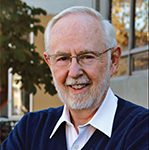
Prof. Arthur B. McDonald
Department of Physics
Queen’s University
“Questions profondes, noires: les neutrinos et la matière noire à l’ONS et à SNOLAB”
En descendant à deux kilomètres sous terre et en créant un laboratoire ultra-propre, il est possible de s’attaquer à certaines questions très fondamentales concernant notre Univers : Comment le Soleil se consume t-il?; Quelles sont les particules de matière noire qui composent 27 % de notre Univers?; Quelles sont les propriétés des neutrinos, ces particules insaisissables qui sont l’une des composantes fondamentales de la nature? L’Observatoire de neutrinos de Sudbury (ONS) a permis d’observer, chez les neutrinos, de nouvelles propriétés qui débordent le modèle standard des particules élémentaires et confirment l’exactitude poussée des modèles sur la manière dont le Soleil se consume. Le laboratoire agrandi SNOLAB permet d’accueillir le monde dans des expériences en collaboration où l’on cherche les propriétés des particules de matière noire, en quête d’autres propriétés des neutrinos et pour capter les signaux neutrino émis par les supernovae de notre galaxie, la Terre et le Soleil. On décrira les avantages découlant de l’aménagement de l’un des laboratoires ayant la radioactivité la plus faible du monde et la science fondamentale qui en émane
Monday, May 29, 19:30
Plenary Speakers
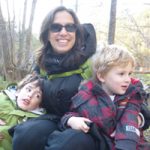
Dr. Cécile Fradin
McMaster University
“On the importance of diffusion in biological systems”
In living systems thermal motions become dominant at the nanometre scale, thus protein diffusion must play an important role in cells. But how can stochastic motions at the molecular scale add up to create the exquisite order observed at the cellular scale? Dr. Fradin will present the case of Bicoid, a protein whose concentration acts as a postal code in the fly embryo, by letting cells know what is their exact location. The diffusion of Bicoid across the embryo drive the robust and precise formation of a large-scale concentration gradient, as envisioned by Francis Crick in 1970. Further, the diffusion of Bicoid while searching for its binding sites on the DNA controls how quickly and precisely each cell in the embryo can read the gradient concentration. Bicoid is thus a perfect exemple of how protein diffusion in cells can both drive exquisitely precise pattern formation and support the very rapid transmission of information.
Wednesday, May 31, 17:30
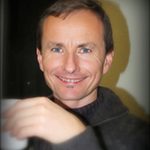
Prof. Marcel Franz
Dept. of Physics & Astronomy
University of British Columbia
“From solids with topology to black holes and back”
An intriguing connection was noticed recently by Kitaev between a simple model of Majorana fermions with random infinite range interactions – the Sachdev-Ye-Kitaev (SYK) model – and the horizons of extremal black holes in two-dimensional anti-de Sitter (AdS2) space. This connection furnishes a rare example of holographic duality between a solvable quantum-mechanical model and Einstein gravity. In this talk I will review some of these developments and describe a proposed physical realization of the SYK model in a solid state system. The system employs the Fu-Kane superconductor realized at the interface between a three dimensional topological insulator (TI) and an ordinary superconductor. The requisite Majorana fermions are bound to a nanoscale hole fabricated in the superconductor that is threaded by N quanta of magnetic flux. Under the right conditions the Majorana zero modes are described by the SYK Hamiltonian. Extensive numerical simulations demonstrate that the system indeed exhibits physical properties expected of the SYK model, including thermodynamic quantities and two-point as well as four-point correlators, and suggest ways in which these can be observed experimentally.
Monday, May 29, 10:30
Dr. Laura Greene
President, American Physical Society
lhgreene@magnet.fsu.edu
“The American Physical Society and Electrons: Interesting Correlations”
The American Physical Society (APS) is the largest physics society in the US whose main focus remains our Journals. We also provide four major programs, including international affairs, and are working towards dynamic correlations with other physics and scientific societies, worldwide. It is almost as exciting as the field of correlated electron matter, which poses fundamental physics questions, with unique applications; we believe on the precipice of breakthrough solutions
Wednesday, May 31, 17:00
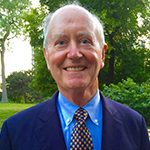
Prof. Chris Quigg
“Perspectives and Prospects for Particles Physics”
Prof. Quigg will present an overview of where we stand in the physics of high energies and ultrasensitives experiements, mentionning developments from Large Hadron Collider experiements and elsewhere, and give an assessment of what comes next. Prof. Quigg will bring plenty of questions, and looks forward to hearing yours.
Thursday, June 1, 17:30
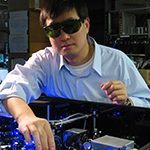
Dr. Jun Ye
JILA, National Institute of Standards and Technology and University of Colorado
“Atomic Clock based on quatum matter”
Quantum state engineering of ultracold matter and precise control of laser coherence have revolutionized a new generation of atomic clocks with accuracy at the 18th digit. This progress has benefited greatly from microscopic understanding of atomic interactions in the quantum regime. In return, the unified front for precision metrology and quantum physics has enabled exploration of many-body spin systems. Our next clock will have at its core a Sr Fermi degenerate gas configured as a band insulator in a three-dimensional optical lattice. The correlated, high-density atomic system provides a clear path for improving the clock performance to the next decimal point, and sets the stage to advance measurement precision beyond the standard quantum limit. These emerging quantum technologies will allow us to test the fundamental laws of nature and search for new physics.
Thursday, June 1, 9:15
